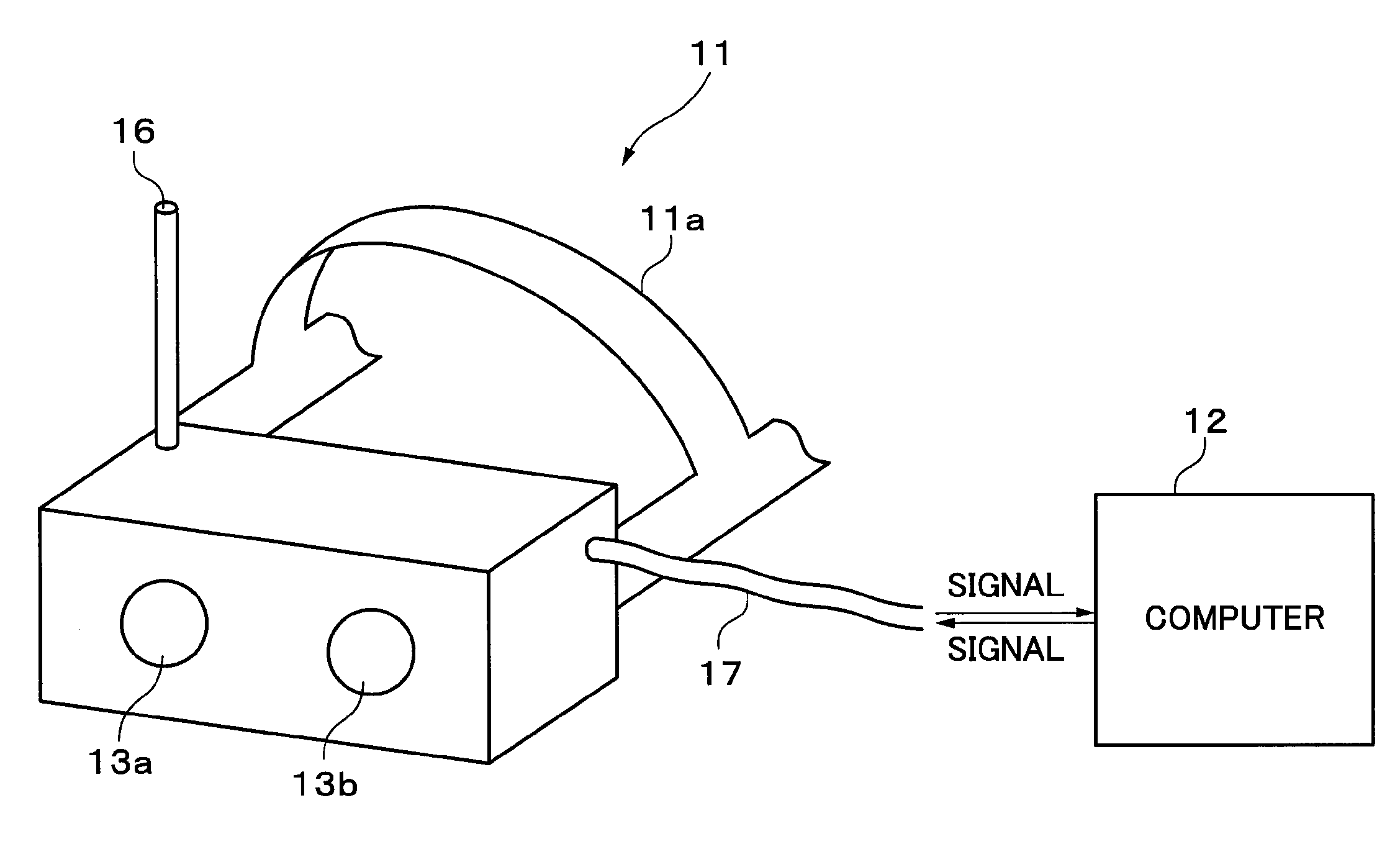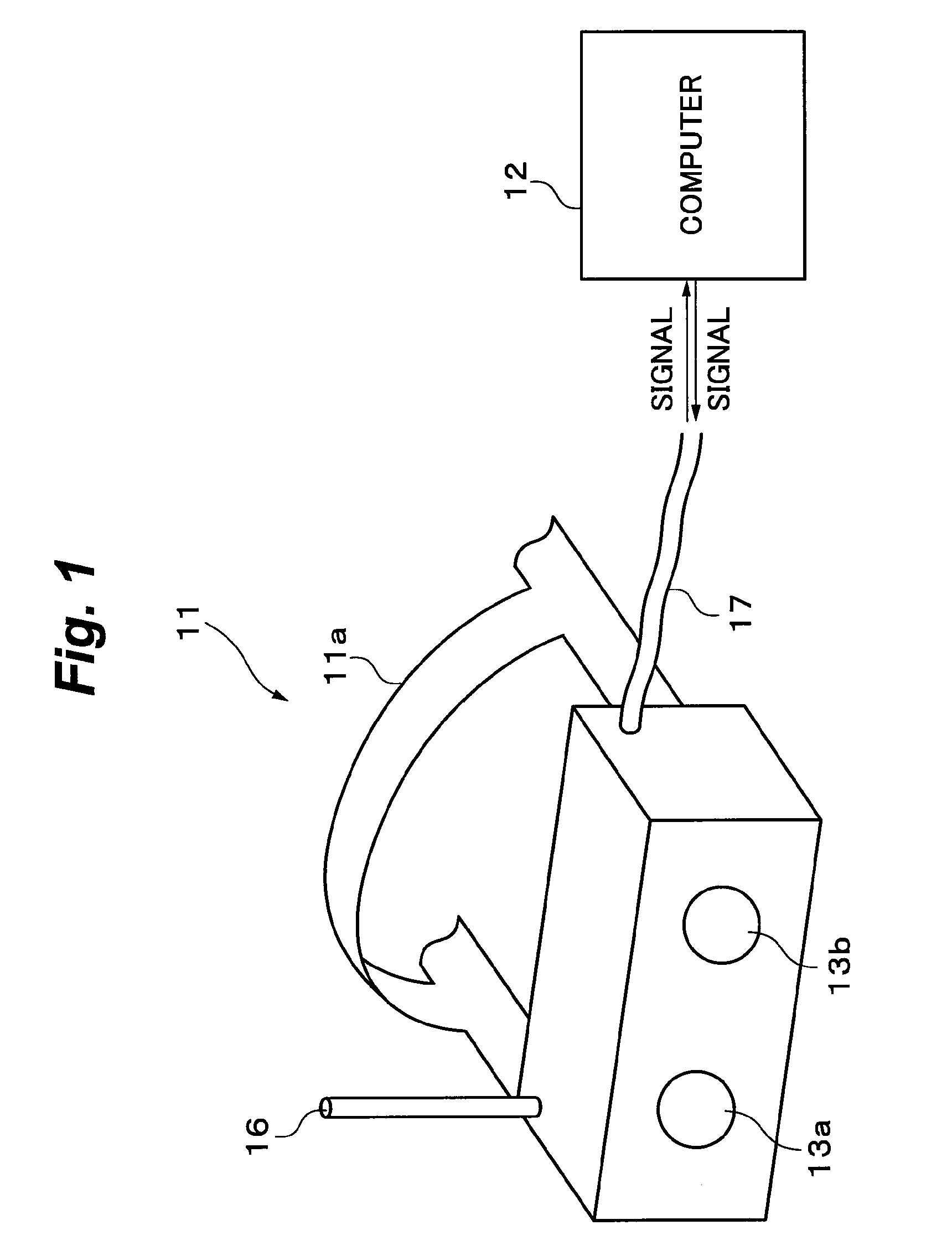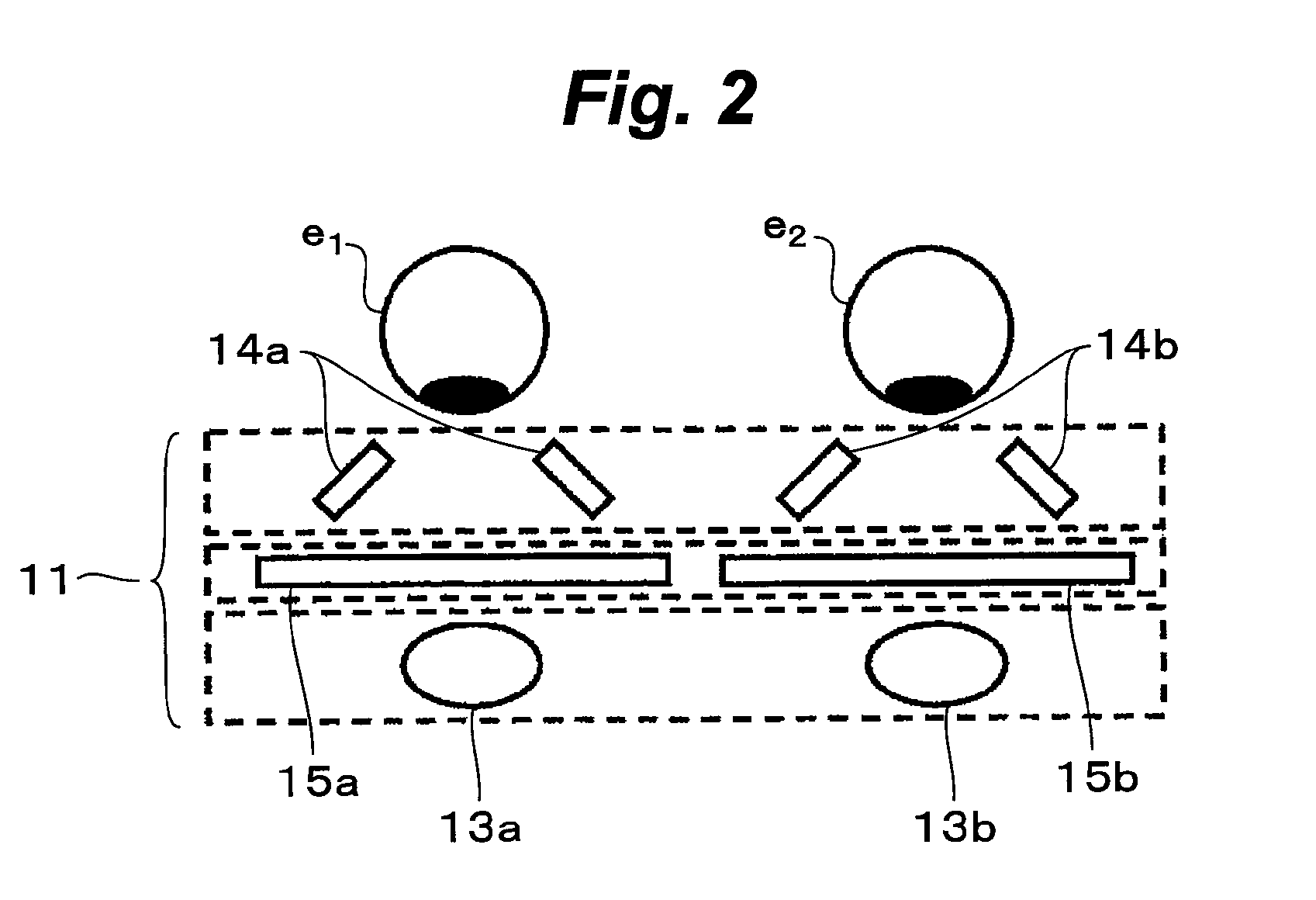Examination system, rehabilitation system, and visual information display system
a visual information display and examination system technology, applied in the field of examination system, rehabilitation system and visual information display system, can solve the problems of visual-spatial perception defect, patient abnormal behavior, and common disturbance of attention
- Summary
- Abstract
- Description
- Claims
- Application Information
AI Technical Summary
Benefits of technology
Problems solved by technology
Method used
Image
Examples
Embodiment Construction
[0033]The present invention will be described in detail below concerning the one embodiment of the present invention with reference to the accompanying drawings.
[0034]FIG. 1 shows the visual information display system according to the one embodiment of the present invention. The visual information display system can be used as an examination system or a rehabilitation system for handicapped persons such as visually impaired humans.
[0035]As shown in FIG. 1, the visual information display system includes a head mounted display 11 and computer 12.
[0036]The head mounted display 11 is constructed as shown in FIG. 2. As shown in FIG. 2, the head mounted display 11 includes two 3CCD cameras 13a and 13b provided on the front face thereof, more specifically, in positions where they will optically correspond to both eyes e1 and e2 when the head mounted display 11 is mounted on the head of a user or examinee, two eye cameras 14a and 14b provided in positions corresponding to the both eyes e1 a...
PUM
 Login to View More
Login to View More Abstract
Description
Claims
Application Information
 Login to View More
Login to View More - R&D
- Intellectual Property
- Life Sciences
- Materials
- Tech Scout
- Unparalleled Data Quality
- Higher Quality Content
- 60% Fewer Hallucinations
Browse by: Latest US Patents, China's latest patents, Technical Efficacy Thesaurus, Application Domain, Technology Topic, Popular Technical Reports.
© 2025 PatSnap. All rights reserved.Legal|Privacy policy|Modern Slavery Act Transparency Statement|Sitemap|About US| Contact US: help@patsnap.com



